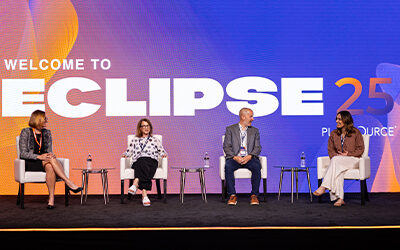Open enrollment, or—as we like to call it—the ‘Super Bowl’ of benefits, is an exciting and busy time for HR teams.
Though most enrollment periods only last two weeks, the entire process takes months of planning, and enrollment serves as the culmination of all of HR’s hard work to provide robust employee benefits.
The planning and execution process itself can seem daunting, and it can be easy to let a few minor details fall to the wayside as larger issues arise—though even small mistakes can be costly (literally) in the long run.
If you’re wondering what to watch out for, check out these 5 common open enrollment mistakes to avoid during this year’s enrollment season:
1.) Failure to Communicate
Is a single, simple email that announces open enrollment dates and requirements your sole method of communication? If so, you could be missing the mark with employees.
According to the 2019 Benefits Benchmark Report, over 40% of employees wait until the last minute to enroll.
And, the average employee receives over 80 emails per day, so it’s likely that your initial communication will be filed away quickly or buried under other messages.
Keep enrollment top of mind at the moments it matters most with a complete communications strategy. But don’t worry if that sounds daunting—there are plenty of free tools and templates available to help expedite your communication efforts.
Check out this free open enrollment communications timeline for a full map of when you should be sending out messages and see our free email templates that can get you started. And don’t rely too heavily on any one communication method; rather, take the time to invest in multiple communication channels, including print, social media, text messaging, video and more.
See more open enrollment communication tools and best practices in our FREE OE Kit.
2.) Misuse of Technology
One of the most common mistakes HR teams make during open enrollment is relying too heavily—or not heavily enough—on technology.
If your enrollment platform allows, take full advantage of education, communication and decision support tools. These handy features are well worth every cent to help your HR team become a lean, mean, benefits enrollment machine.
Look for a platform that features custom communication functionality that will easily allow you to connect with specific employee groups—like employees who have not yet completed enrollment.
Additionally, look for a platform that can support in-system videos for timely benefits education and that offers at least basic decision support to help employees make better benefits decisions (or a company that integrates with robust decision support tools).
HR tech isn’t just for benefits enrollment. Though some workers most definitely want to hold, scan and even memorize their trusty print benefits guide, the shift to digital is real and many employees will prefer and even expect a digital benefits experience. Make sure that all of your benefits materials are easily accessible and sized properly for digital consumption via a mobile-friendly platform.
As we’ve explored, technology can be a great asset; but, it can’t solve all of your enrollment problems. While built-in education and decision support tools are extremely helpful, the education process should really begin several weeks before enrollment begins; don’t wait until the last minute and expect your enrollment platform to do all of the heavy lifting. If you do, expect a surge of last-minute emails and meeting requests to come in during the last few days of OE—which is pretty much the exact opposite of what you’re trying to achieve.
3.) Ignoring The Data
Just because no one enrolled in the high deductible health plan last year doesn’t mean it’s a sure flop this year too… right? Bueller?
Your HR systems are chock full of data just waiting to be untapped. Make the most of your tech investments by digging into the data to establish trends and benchmarks for each enrollment season.
Is there a benefit or plan that employees love? Did a new program have disappointing performance last year, and what are some of the potential reasons for the results? Is the cost of providing benefits slowly creeping up each year? If so, what are some possible solutions to mitigate this cost?
Doing a thorough analysis of your HR and benefits data each year will help answer these questions and steer strategic decisions that drive organizational results.
4.) Not Offering Benefits Education or Support
HSA, HDHP, ACA—there’s not an HR acronym out there that your HR team isn’t familiar with. However, most employees aren’t quite as savvy about the latest and greatest HR jargon, and most employees spend less than one hour reviewing benefits materials and less than 20 minutes actually enrolling in their benefits. So, proper education and support should be in place to help employees truly understand and appreciate their benefits.
In addition to a robust communications plan, HR should offer plenty of educational tools to help employees learn and understand everything from basic HR terminology and niche benefits concepts—like how an HSA can only be used with an applicable HDHP.
Incorporating video into benefits education is a great way to simplify complex benefits concepts into short, ‘snackable’ bits that can be easily and quickly absorbed. And video is more affordable than ever—just check out our FREE video library for access to over 25 educational videos on employee benefits concepts.
Benefits education should be both convenient and timely, which is exactly why investing in an enrollment platform with built-in decision support tools can work wonders to expedite the enrollment process. Basic decision support tools can help employees easily compare benefit plans and provide plan recommendations based on simple questions. Or, take it a step further with a robust decision support experience, which can vastly improve enrollment rates in key programs like HDHPs and 401(k) plans.
There’s really no such thing as too much help and support during open enrollment, so have plenty of tools and resources handy to help employees when it matters most.
5.) Cutting Corners
We get it—open enrollment is often the busiest time of year for HR. However, this is all the more reason why your HR team simply cannot afford to cut corners.
It’s easy to let small details fall through the cracks—skimming on communications, not scheduling benefits meetings or Q&A sessions, going light on education initiatives… These are just a few examples of important areas that are easy to overlook when OE sneaks up and proper planning isn’t taken.
Remember—it’s never too early to start planning for open enrollment. Start the planning early to give your team plenty of time to make any necessary changes and create a robust communications plan to ensure a smooth and timely enrollment process.
If your team can’t seem to take the steps to create a full communications plan or support the influx of questions during open enrollment, benefits outsourcing might be a great solution to ease the pressure on HR and provide a better benefits experience for employees.
Need Help Dodging Costly OE Mistakes?
We’re here to help. Sign up for a complimentary tour of our modern benefits enrollment experience—your employees will thank you.
Recent Posts
Empathy, Innovation & Action: Top Takeaways from HR Leaders Who Spoke at Eclipse
Empathy, Innovation & Action:Top Takeaways from the HR Leaders Who Spoke at...
Charting the Future of PlanSource: Our Vision for What’s Ahead
Discover how PlanSource unveiled game-changing AI innovations at Eclipse 2025, transforming how HR leaders manage benefits and how employees choose them. The future of benefits starts here.
Navigating New Requirements with the Paperwork Burden Reduction Act
Navigating New Requirements with the Paperwork Burden Reduction...




